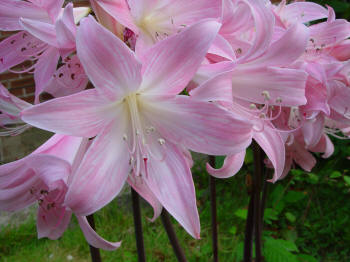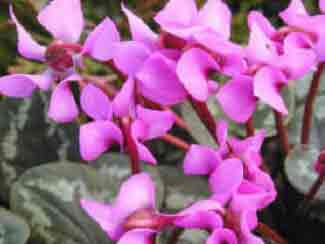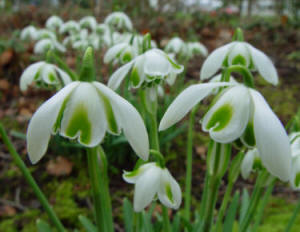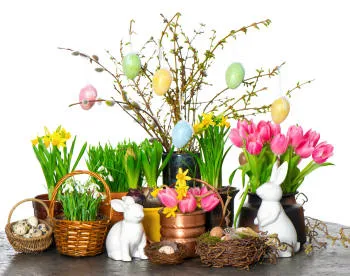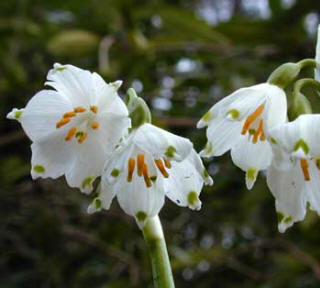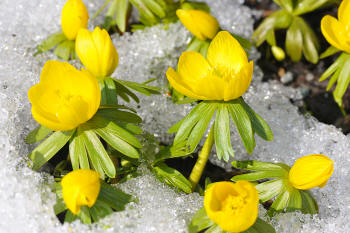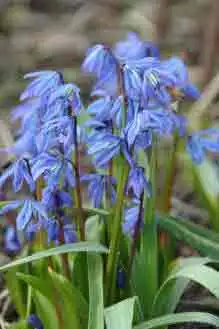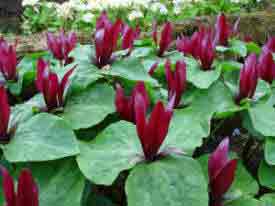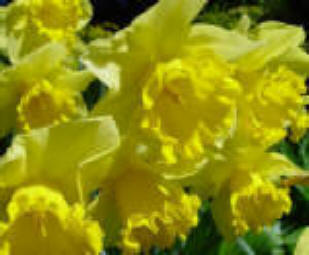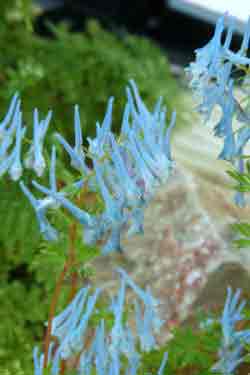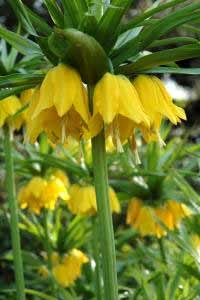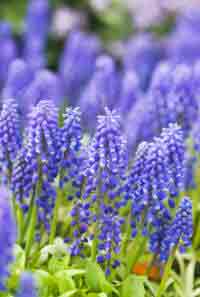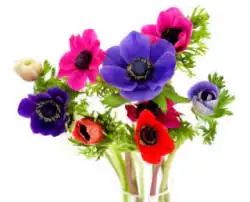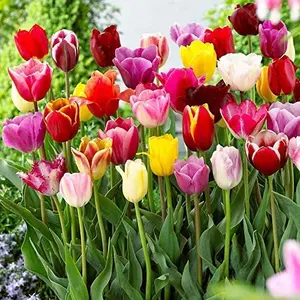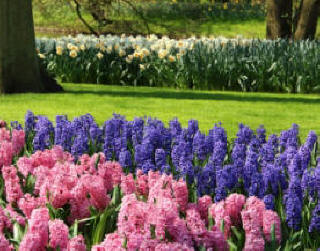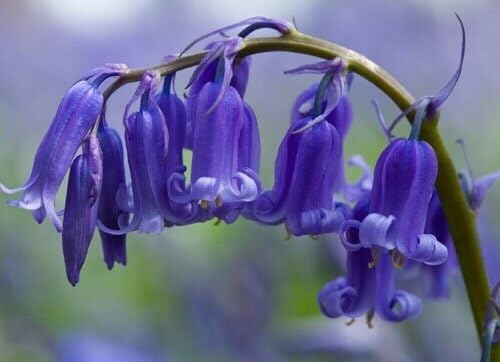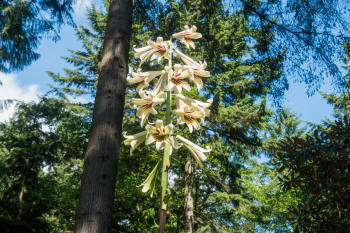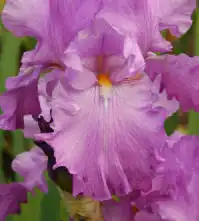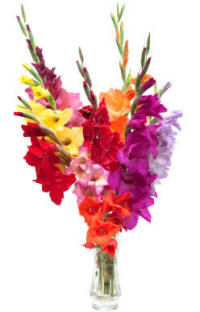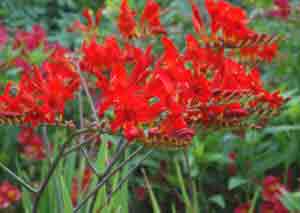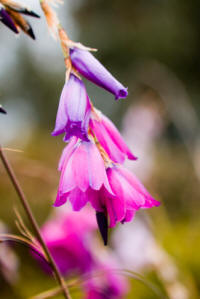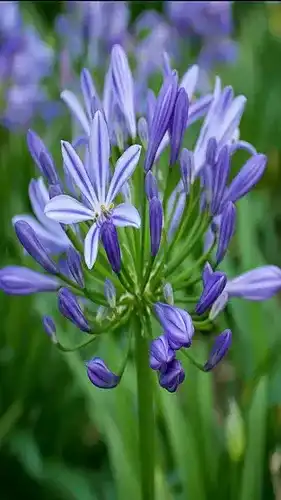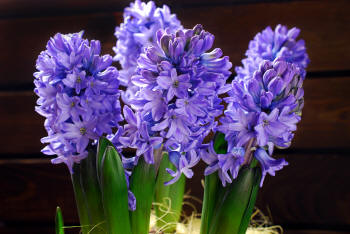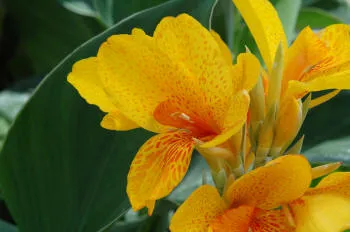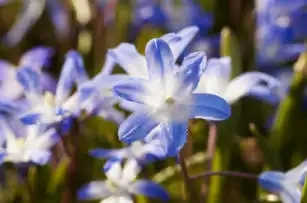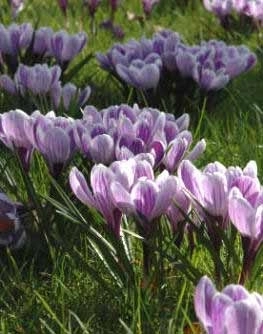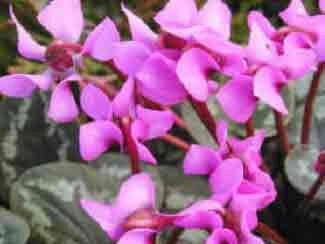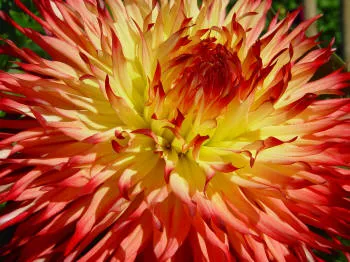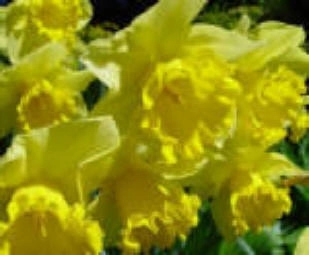January : A list of Bulbs which should be grown / planted in January.
Cyclamen coum Hybrids are a dainty group of flowering tuberous plants - though they are often referred to as cyclamen coum bulbs - with flowers ranging from white, through various pinks and into deepest carmine red. They tend to self seed themselves, so be careful of any 'weeding' you may do around the plant. Do not hoe, or when they are dormant, you cane accidentally scalp the top of the corm - taking off the flower buds in the process.
They have attractive leaves - normally smooth-edged and rounded, being dull green with silvery markings.
Snowdrops are one of the hardiest groups of flowering bulbs - or any other plants. As soon as the weather warms up half a degree, they cannot wait to make an appearance in the garden or woodland.
Galanthus nivalis is the 'common' snowdrop, but there are many other varieties that are sought after by the enthusiasts. Such is their appeal, that there are societies for snowdrop lovers and many enthusiasts who cannot wait until the last few days of winter herald the emergence of their main interest - the Snowdrop.
The bulbs are best for growing indoors or flowering indoors - during the late winter early springtime are ..
Crocus
Hippeastrum (Amaryllis)
Hyacinths
Narcissus
Tulips
There are others such as Cyclamen that are generally sold as potted flowering plants during the winter Christmas in particular. These can simply be taken indoors and treated like normal houseplants.
February : March : A list of Bulbs which should be grown / planted in February and March
This Leucojum is a bulbous perennial for woodland, part shade or full sun. Clump forming. Prefers humus rich soil, and is a nice meal for slugs! Plant bulbs in Autumn. Leucojum vernus - the Snowpake - is a good alternative to - and easier to establish than - the snowdrop.
The pure white pendant 'bell' flowers are more showy than the snowdrops, and are higher off the ground 8 - 10 inches ( 25cms) The white flowers have attractive green tips, and are held aloft of the dark green straps of foliage, which in any event appear after the flower stems have reached their height.
The Chionodoxa group of bulbs are all early spring flowering - hence the common name of Glory of the Snow. They are sometimes to be found with their mainly blue flowers peeping though shallow snow.
Planting and Care of Chionodoxa Bulbs - Chinodoxa are generally hardy and need very little care. Normally available in Autumn at garden centres, the Chionodoxa bulbs should be planted in the Autumn at a depth of no more than 3in (7-8cms).
Crocus are amongst the most colourful of late winter/early spring flowering bulbs, and are adaptable enough to be planted in almost any area of the garden. They are actually corms, not bulbs.
There is a huge colour range within the Crocus Genus, ranging from pure white through yellows, blues, and the deepest of ruby reds. Many are bi-coloured, with several striped Crocus of note. Pink however, seems evasive, though many of the colours verge on certain shade of pink - depending upon the ambient light.
Aconites are tuberous plants that will form clumps of attractive flowers early in the year. They will soon form perennial clumps - dying down in the summer for their dormancy period - to return in flower in the early spring or even late winter.
As well as being of good garden use, the Eranthis - or Aconites - are used in Homeopathic medicine, and also as a herb. They are all poisonous to the extent of mild stomach upsets if eaten. The sap may also cause skin allergy for some.
Dwarf Iris Bulbs are grown from bulbs - rather than the rhizomes of the large bearded irises. The Iris reticulata bulbs characteristically have a net like skin covering, are small and usually off white - pointed at the top.
This group of dwarf iris bulbs are generally known as Reticulata Irises and are all early spring - late winter - flowering - often to be seen popping through light snow. Needless to say, Iris reticulata bulbs are winter hardy in most areas.
We talk here of only one group of Ranunculus - a huge family - and that is the group known as Ranunculus asiaticus. This group of Ranunculus grow from tubers though they are often referred to as Ranunculus Bulbs - flower in spring and die down for the summer months.
These Ranunculus offer a welcome splash of many colours from March until April. They are easy to grow, but so many gardeners fail with them. They are generally to be found as potted flowering plants in garden centres during the late winter or early spring.
Of the Scillas, Scilla sibirica is probably the most common - and admired! There are others outlined below which will also please.
Blue is the predominant colour of the flowers of the Scilla bulbs, but there are also a few whites and a pink worth growing.
All Scillas are spring flowering - March being the start, though sometimes earlier. The image below was taken on March 15th. The flowers are well advanced on this, so safe to assume some initial colour in first week of March.
There is nothing quite like the vivid blue flowers of Scilla sibirica, even though sometimes you will have to go hunting for it - being just a few inches tall - 4-6in in a good season!
Trilliums are a group of rhizome perennials - normally herbaceous in that they die down each year. As you would expect by its name, the Trilliums have their foliage grouped in three leaves, and of course the various flower parts similarly grouped in three. Three petals, three sepals etc.
All of the Trilliums do well in woodland situations and will also tolerate full sun - though prefer moist soil. A shaded border is ideal, and the early growth and flower will do much to create additional interest to the early spring garden.
March : April :
No-one would argue that the humble daffodil inspired one of the greatest - and certainly best known - poems about flowers. William Wordsworth Poem about Daffodils says everything there is to say about this flower - except how to grow it. So, we fill in the gaps
Daffodils can be planted in tubs, containers of almost any type, in the garden, under lawns or naturalised in woodlands.
One thing is certain about Daffodils - whatever the weather, they are the true sign that Spring is at last pushing away the dull, grey days of winter.
The tuberous Corydalis generally prefer moist soils, though are happy to habituate soils that are dry in the summer - their dormancy period.
Corydalis flexuosa 'Craighton Blue' has flowers which are typical of the group - all with a long erect spur at top of upturned flowers. The pendulous part of the flower being trumpet or horn shaped and housing the stamens and anthers which are accessed from within by those flying insects that can alight, and enter.
This cultivar in fact has a fibrous root system, which house small bulbils - used as the storage organs for food in the dormancy period.
It prefers semi shaded areas, though will tolerate early or late sun during the day. It does not like crowded conditions, and is far happier isolated - or at least not hassled by other plants. The foliage is as delicate as the flowers, and attractive light green foliage held on bronzed stems.
The versatile Crocus corms can be planted virtually anywhere in the garden, and this includes in all types of borders, naturalised in the lawn, rock gardens, raised beds, containers and more or less anywhere where there is enough depth of soil to plant the corms. The main criteria is being planted in full sun, though some do quite well in dappled or light shade.
There is nothing that quite lights up the garden after the dull months of winter, than the first of the crocus peeping through - normally in March, though late February in a mild winter can also be the starting point.
The bulbs start into growth in mid spring, sending up long stems which are topped with spectacular groups of flowers on which is a crown of bracts (leaf-like).The flowers are grouped in 6 to 8 individual pendulous bell shaped blooms from which droops the stamens and anthers. They are either yellow, orange or red, and can stand to 1 metre above ground level, though 60cm is more the norm.
They do not have a particularly nice scent, and the bulbs are quite obnoxious in odour - especially before planting. No matter, they are still worth planting and will grow into colourful clumps over a few years.
They insist on having well drained soil, for the bulbs have a hollow cup before planting, collecting any surplus moisture and being liable to rot. Nevertheless, they should be left in the ground after planting and blooming, and if in the right conditions - sun or light shade - will give years of good service.
The Tulip is second only in popularity to that of the Lily. Who says so? YOU dear visitor. For there are around 1.2 million searches each month on the keyword Tulip (1.5 million if you amalgamate the Tulip and Tulipa searches). It seems that you are intent upon planting tulip bulbs
Against that number, we have searches totalling 2.7 million for the term Lilies. 'Lily' is even greater with around 3.2 million searches each month - but this will include many pages which are not about the garden Lily, but of songs, books and names.
Enough to say now, that the Tulip is still a very popular garden bulb. Coincidence maybe, that it is of the same family as the Lily - Liliaceae.
Muscari - The Grape Hyacinth - will grow virtually anywhere in the garden or in containers of various sorts
These are superb bulbs for the front of a border, and will soon spread to fill any available space - whether in full sun or semi shade. As container subjects, Muscari bulbs they are valuable in that they will flower every spring with very little care or attention. The fact that they are but a few inches tall makes them all the more attractive - and useful.
Muscari armeniacum and its many cultivars in the mainstay of garden planting, though Muscari comosum is one that I have been very happy to grow. Most of the bulbs that you will find during Autumn in garden centres - and the potted clumps to be found in the spring - will be of Muscari armeniacum. It will give no problems - simply flower and spread year after year.
There are a wide range of Anemones in this Genus - from the Buttercup family of Ranunculaceae. Here we are interested only in those that are produced from tubers or those anemones that have rhizomatous roots.
The late flowering perennial Japanese Anemones, have neither tubers or rhizomes, and are fibrous rooted herbaceous perennials, so are not included in this section.
The Anemones that are produced from tubers or rhizomes, are normally spring and summer flowering types - as against the Japanese Anemones which flower well into the autumn.
May : June : Growing Bulbs for Summer colour in your garden
Camassias are one of the most underrated bulbs for a brilliant display in the Spring and early summer.
I have photographed them in positions within a border in full sun, in meadow areas where they are happy to naturalise in long grass, and in the dappled shade of woodlands.
There are only a handful of Camassia to mention - all with the same cultural needs for care and growing. Main colours are either white or blue, held aloft on leafless 'flower spires' of around 24in
There are many different flower and growth types in the Tulip range - each with differing flower shapes and general habits of growth. Tulips can be grown to flower from early spring - late winter even - though to the first few days of summer.
There are strict classifications of tulips - changed over the years. This types we outline or more 'descriptive' than enthusiastically correct. Tulip anoraks please forgive!
Whatever the type of Tulip that turns you on, one thing is sure. You will be pleased with the vibrant colours of the garden hybrids and intrigued by the subtlety of the lesser known species Tulips.
No-one would argue that the humble daffodil inspired one of the greatest - and certainly best known - poems about flowers. William Wordsworth Poem about Daffodils says everything there is to say about this flower - except how to grow it. So, we fill in the gaps
Daffodils can be planted in tubs, containers of almost any type, in the garden, under lawns or naturalised in woodlands.
One thing is certain about Daffodils - whatever the weather, they are the true sign that Spring is at last pushing away the dull, grey days of winter.
Whilst many Hyacinths each year are sold as prepared Hyacinth Bulbs for forcing into flower at Christmas, they are also a deservedly popular choice for flowering in the garden in the middle of spring.
The range of Hyacinth Flower colours is second to none for the garden at this time of year, and of course the scent!
Sun or light shade are happy places for hyacinths, and of course they are superb in pots and containers of any type.
Firstly, let's clear up the legal aspect of buying and selling Bluebells. There is a little confusion as to what the law allows in the UK
It is illegal to offer for sale, English bluebell bulbs that have been collected from the wild. It is in effect, illegal to dig up Bluebell bulbs on any land - other than your own land - for any purpose. You CAN collect the seed of Bluebells from wild stands - if you have the owner's permission! You can also pick the flowers - with the owner's permission.
There are two basic types of English Bluebell bulbs for growing in the garden,
Begonias are grown from tubers, and can be used either indoors or in the garden once all signs of frosts have disappeared. There are several types of Begonias that can be grown from tubers. There are also Begonias that are grown on a fibrous root system - but not for this section on bulbous plants.
The range of flower types and flower colours available, make this an important group of plants for the garden in particular.
The most important group of tuberous begonias for garden use - or indoors - is the Begonia Tuberhybrida group. This includes all of the begonias in the image, and most of the large double and single flowered begonias that are sold for garden use.
There are many flowering types within this group, including large double flowered Begonais, Picotee, Fimbriata, Non-stop etc. They are all available as dormant tubers in early spring. If you miss out on these, then they are also available as small plants in late spring.
As with the edible Onion family, there are a number of types of Alliums with slightly differing flowering times, different habits of growth, and an assortment of flower colours.
Basically, there are ornamental onions, garlic and chives. Some are edible, some form bulbs, others form fleshy roots or rhizomes. All are perennials, in that they re-grow year after year. Some are frost hardy, whilst others are tender and will need winter protection by lifting and drying off - ready for storing in the winter months.
There is a narrow rage of flower colours normally centred around reds, blue and purples. However, there are also white form and a few yellow Alliums to be had....
Iris ensata is a group of moisture loving rhizomatous perennials. There are now many hybrids which are much showier than the basic Iris ensata types. They normally come under the 'beardless' Iris category.
The Iris ensata normally send up single stems from the rhizome - but sometimes branched stems. Each stem can bear 3 or even 4 individual flowers and as can be seen by the image, there are many choice - if not gaudy - varieties or cultivars.
Flowering period is normally mid summer - the image above was taken 23rd June. As distinct from the 'Bearded irises' this group like to have their rhizomes below ground level. As such, they respond well to mulching in the spring with a rich organic compost.
July : August :
Canna Lilies - as they are often called - are not true lilies. Cannas are produced from Rhizomes and are herbaceous perennials. Canna lily bulbs - as they are often wrongly called - die down each year and are stored for the winter in a dormant state - to be started back into growth the following spring.
They are classed as half hardy, so are not suited to leaving in the ground to overwinter - other than in the warmest countries, where they often grow as wild plants.
The Cannas get their common name from the fact that the seeds are hard - like pellets. As such, they were used as ammunition - stuffed down the barrels of musket rifles when lead shot pellets were scarce! The hard seed coats present a few problems in the propagation of Canna lily bulbs from seeds.
Cardiocrinums are often known as Giant Lilies, for they resemble - closely - the flowers and habit of their parent family - Liliaceae. Like the Lilies, they are summer flowering.
Cardiocrinums have the typical trumpet flower of the lily, but with different foliage - being heart shaped and sometimes attractively veined.
As well as having the gorgeous lily-like flowers of the trumpet lilies, the Cardiocrinum has spectacular seed heads which persist well into the winter, and are are sought after by all manner of garden birds.
The Iris group are mentioned in this section, in that some of them are grown from real bulbs, and others from Rhizomes.
They are a valuable addition to the 'bulb garden' in that the various types have different flowering periods. Together with that, the range of flower colours and the differing flowering heights and forms make them a versatile addition.
Gladiolus are one of the most spectacular cormous plants that can be grown in most gardens. Other than the fact they are so colourful, a big plus point in their favour is that they take up so little room for such a splendid display of flower from mid summer through until autumn.
The big disadvantage of gladioli bulbs, being that they are also splendid cut-flower material. Not a problem for some!
There are three main groups of Gladiolus for growing in gardens..... Gladiolus Grandiflorus group - which as the name suggests is the doyen of large flowered specimens. Whilst they can be used as cut flower - in large arrangements, this group of Gladioli bulbs are far better suited to the garden display with their masses of huge flowers - often twenty - thirty per stem.
Here we are talking of the Dahlia that are grown from tubers, and not the smaller bedding dahlias - though they are also fine flowering plants for late summer flowering. Most of the bedding Dahlias, grow from a fibrous root system and do not produce tubers. They are not true bulbs, but fall in this category of bulb-type plants.
Dahlia flowers are the mainstay of the late garden flower shows, where perfectly grown specimens can be seen as cut flowers - awaiting the verdict of the flower judges - who may decide that some are not quite as perfect as the exhibitor might have thought!
Crocosmia - or Montbretia as once were - are probably not as popular as they should be, because of the huge clumps of untidy foliage that is often to be seen in gardens old and new. If grown properly, and cared for, then the Crocosmia are a welcome display of colour in the herbaceous or other borders, from late summer through till the last days of autumn.
Crocosmia grow from corms - though often referred to a Crocosmia bulbs - and have the classical corm habit of producing a new corm - for the next year on top of the current corm which dies off.
The Dieramas are normally available are quite hardy, though may suffer from hard frosts in the first few years of life. One established into clumps, they become more hardy - as with many other plants.
The Dierama is an evergreen clump-forming perennial, which sends up its long arching flower wands in mid summer. It always attracts attention - swaying gently in the breeze.
Unusual for most of the subjects in this bulb section, the Dierama is evergreen and has no dormancy period to speak of, so need not (should not) be lifted in the autumn months for storage.
The long arching flower stems - sometimes to 1 metre in height - will benefit from the protection in a sheltered site, and preferably in full sun or at least a very light place.
Agapanthus are either deciduous (herbaceous) or evergreen perennials with either bulbous or fleshy roots. As such, they die down each winter, but with a little protection, will spring into growth the following year. The foliage can best be described as strap-like with narrow leaves sprouting from the base of the plant to around 18in (45cm).
The flowers are borne on generally sturdy stems to a height of 24in (60cm) maximum. There are also dwarf varieties. The plants form clumps, and are good for ground cover - being quite dense in the immediate area under the foliage.
Agapanthus were once listed as part of the Allium family - Alliaceae. It is easy to see why this was so when one compares foliage and flowers to the larger alliums. However, the Agapanthus is now rightly listed as being one of the huge and diverse Lily family - Liliacea.
South Africa is the original home of the Agapanthus, with dwarfer evergreen species originating in the coastal areas - often evergreen, whilst the Agapanthus that we normally grow in our beds, borders and containers, are from the moister mountainous regions. Obviously why they are at home in the UK climate. They will however be quite happy in dry areas.
As with the edible Onion family, there are a number of types of Alliums with slightly differing flowering times, different habits of growth, and an assortment of flower colours.
Basically, there are ornamental onions, garlic and chives. Some are edible, some form bulbs, others form fleshy roots or rhizomes. All are perennials, in that they re-grow year after year. Some are frost hardy, whilst others are tender and will need winter protection by lifting and drying off - ready for storing in the winter months.
There is a narrow rage of flower colours normally centred around reds, blue and purples. However, there are also white form and a few yellow Alliums to be had....
Galtonias are one of the later flowering bulbous plants, and will help any border or bed back to life and interest with their bell-like pendulous flowers. They are of the same family as Hyacinths - Hyacinthaceae, but do not share the same colour range.
Galtonia viridiflora has erect but sometimes arching stems of off-yellow or greenish yellow bell flowers. The foliage is grey green in colour and long lanceolate leaves, that can be as long as 24in. The flower stalks normally reach 2-3 feet. It is reasonably hardy, but benefits from a winter mulch of a few inches deep to help protects tips of emerging growth.
Galtonia candicans has altogether longer leaves and taller flower stems. The flowers are pure white and noticeably scented - unlike the G. viridiflora. The flower stalks in this case can reach 3-4 feet in height. Mulch in late Autumn to give winter protection.
September : October :
Crocosmia - or Montbretia as once were - are probably not as popular as they should be, because of the huge clumps of untidy foliage that is often to be seen in gardens old and new. If grown properly, and cared for, then the Crocosmia are a welcome display of colour in the herbaceous or other borders, from late summer through till the last days of autumn.
Crocosmia grow from corms - though often referred to a Crocosmia bulbs - and have the classical corm habit of producing a new corm - for the next year on top of the current corm which dies off.
A group of Autumn flowering plants, normally known as bulbs but they are actually corms, the Autumn crocus - Colchicum autumnale - are good for early autumn colour in the garden. They are also known as Saffron Crocus, or Meadow Saffron and are especially suited to planting under trees or shrubs in the shrub border.
The flowering season for Colchicum Autumn Crocus is early autumn / winter. The flowers which are borne on naked plants with no foliage - hence the nick name 'Naked Ladies' - are then followed by large green leaves - not unlike a Cos lettuce!
Nerine bowdenii is by far the most showy of all Nerines with its gaudy ostentatious show of pink in November - sometimes as early as October.
This drift was photographed at the bottom of a house wall - dry as you like but loving the conditions as can be seen. In fact, the best displays I have seen or photographed have been where Nerine bowdenii bulbs in such situations, though they will grow in any garden area where the soil is on the dry side - including areas in shrub borders and of course herbaceous borders.
Schizostylis is a superb autumn - early winter - flowering Rhizome - bulb - that will fit into many places in most gardens.
The flowers are generally a delicate pink or orange red in hue, and seem to be completely at ease with whatever autumn weather is thrown at them. The flowering clusters look so fragile as to be non-hardy, but hardy they are, and should find a place in any border or garden bed.
Schizostylis can be planted anywhere in moist but well-drained soils, and are particularly suited to the front of either shrub or perennial borders. I have photographed them beneath majestic oak trees, so there is not too much moist soil to be had in this situation
Tuberous begonias should be removed from the garden or outside containers before the first of the winter frosts or cold spells affect the tuber in the ground. However, a light frost - that simply blackens the foliage will not normally harm the underground tuber, but the plants should be removed from the garden as soon as this has happened.
If digging up begonias from garden beds, then the plants should be allowed to die off naturally in frost free conditions. Best done by keeping the begonias in full light and warmth, potted in dry peat or compost, and all flowers removed. The foliage will gradually turn yellow, fade, then dry out completely.
Once this has happened, then the old stems can be cut to within a few inches of the tuber and allow to dry off naturally. It may be possible at this point for the old stems to be detached from the tuber. If not, then as the tuber dries out, the stems will wither completely and can be removed from the tubers.
November : December : Growing bulbs for winter
flowering in your garden
There are a wide range of Anemones in this Genus - from the Buttercup family of Ranunculaceae. Here we are interested only in those that are produced from tubers or those anemones that have rhizomatous roots.
The late flowering perennial Japanese Anemones, have neither tubers or rhizomes, and are fibrous rooted herbaceous perennials, so are not included in this section.
The Anemones that are produced from tubers or rhizomes, are normally spring and summer flowering types - as against the Japanese Anemones which flower well into the autumn.
Nerine bowdenii is by far the most showy of all Nerines with its gaudy ostentatious show of pink in November - sometimes as early as October.
This drift was photographed at the bottom of a house wall - dry as you like but loving the conditions as can be seen. In fact, the best displays I have seen or photographed have been where Nerine bowdenii bulbs in such situations, though they will grow in any garden area where the soil is on the dry side - including areas in shrub borders and of course herbaceous borders.
Schizostylis is a superb autumn - early winter - flowering Rhizome - bulb - that will fit into many places in most gardens.
The flowers are generally a delicate pink or orange red in hue, and seem to be completely at ease with whatever autumn weather is thrown at them. The flowering clusters look so fragile as to be non-hardy, but hardy they are, and should find a place in any border or garden bed.
Schizostylis can be planted anywhere in moist but well-drained soils, and are particularly suited to the front of either shrub or perennial borders. I have photographed them beneath majestic oak trees, so there is not too much moist soil to be had in this situation
When we think of Hyacinths indoors, we invariably think of them flowering at Christmas. However, it is quite possible - easy even - to get Hyacinths flowering indoors for three months and more, starting in December and then right through until March and April by forcing hyacinth bulbs. Thereafter, the outdoor Hyacinths will start to put in an appearance.
If you wish to succeed with flowering your Hyacinths indoors at Christmas, then you will need to buy Hyacinth Bulbs that have been specially prepared for this purpose. The 'preparation' includes breaking the dormancy cycle of the Hyacinth bulb by various means including cold treatment to the dried bulbs for specific periods of time. It is much easier forcing hyacinth bulbs that have been prepared in this way.
Hyacinths forced indoors for Christmas. - There will still be a bit of late bulb flower outside - but this is traditionally the time for the Hyacinths that have been specially prepared.
So - ready to give bulbs a go and widen your horizons? Stay tuned to this section which will bring you all the information you need to get planting bulbs in your garden.
